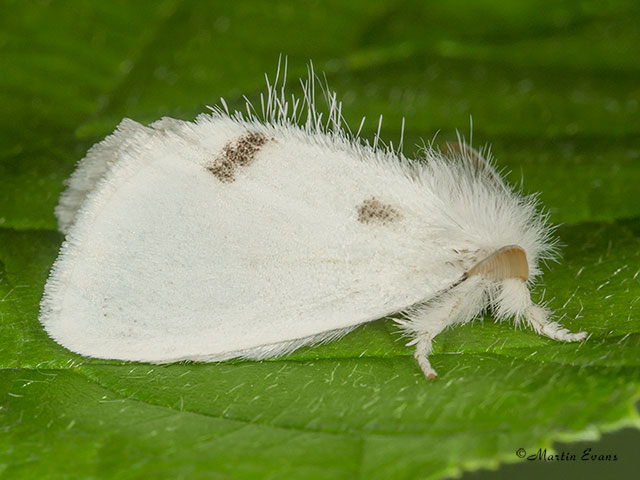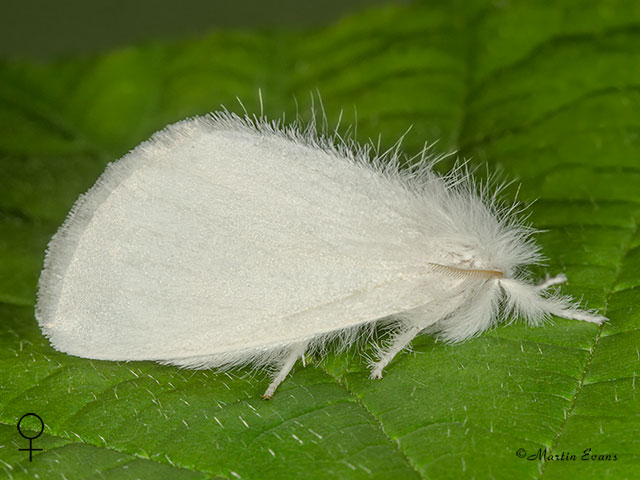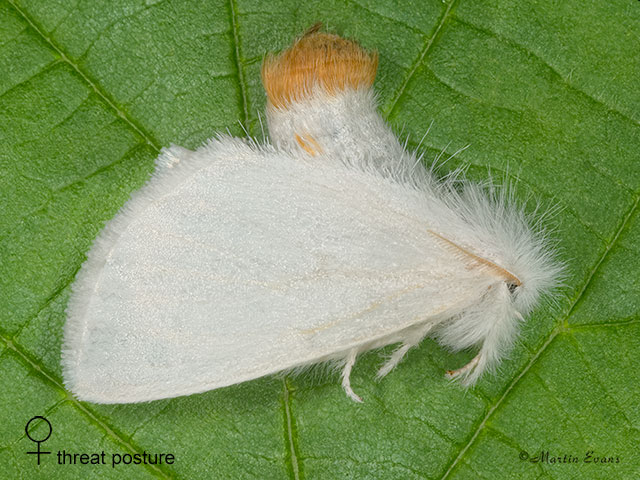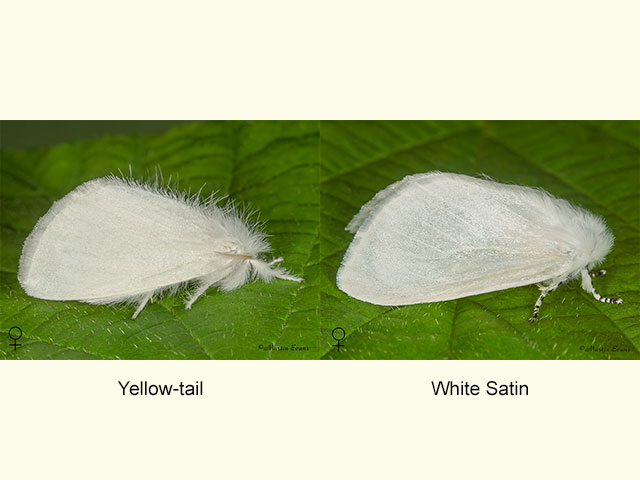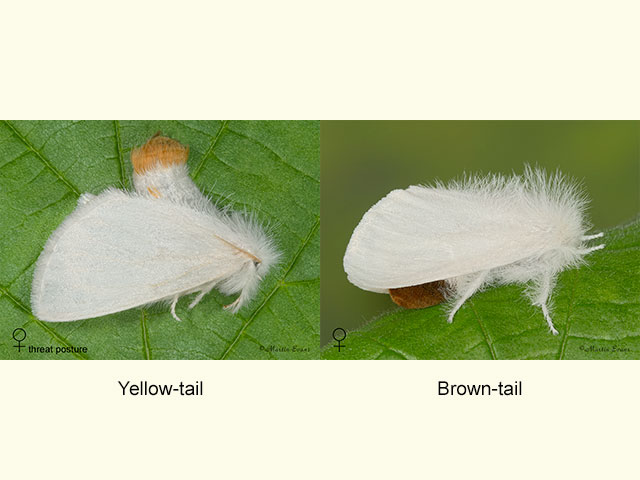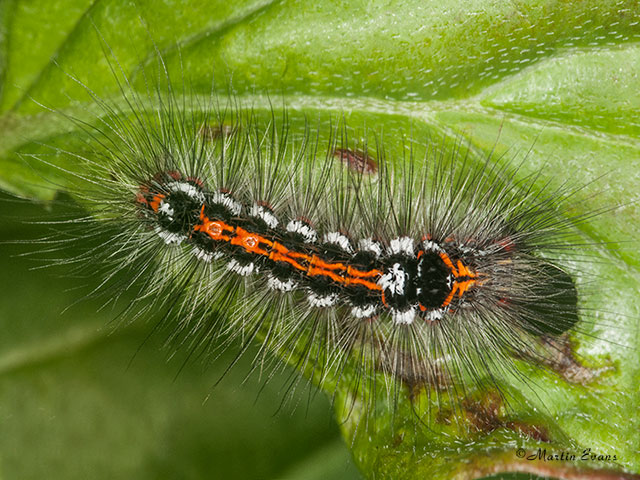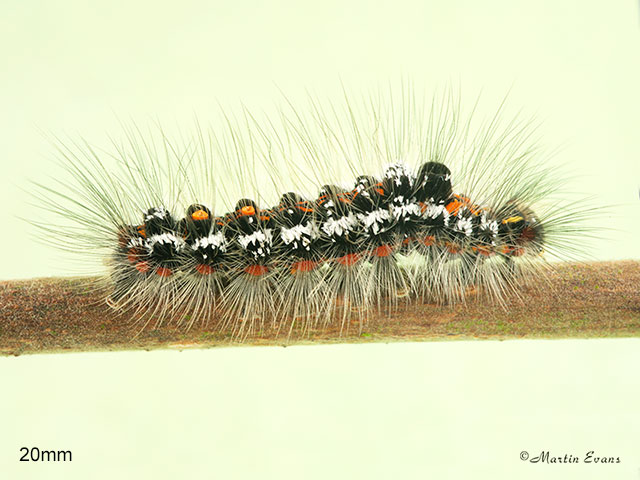Erebidae
72.013 Yellow-tail Euproctis similis (Fuessly, 1775)
Common
Similar species: White Satin Leucoma salicis is on average larger (18 to 27mm), has black ringed white legs and an all white abdomen. Brown-tail Euproctis chrysorrhoea has a brown bulbous tip to the abdomen. Males as well as females have all white wings. Both Brown and Yellow-tail moths curve their abdomen into view when they feel threatened.
Forewing: M 16 to 22mm, F 17 to 23mm
Habitats: Woodland rides and margins, scrub, hedgerows and gardens.
Habits: The moth comes to light.
Foodplant: The larva feeds on Blackthorn, Hawthorn, oaks, elms, sallows, Silver Birch, Downy Birch, Hazel, Barberry and other deciduous trees. The small larva overwinters in a spinning behind bark or amongst dead leaves. After hibernation it will bask openly in the day and is easily found. It pupates in a cocoon spun on the foodplant or in the leaf litter.
On the European mainland it has also been recorded feeding on Alder, Rowan, apples, pears, Sour Cherry, Bird Cherry and poplars.
